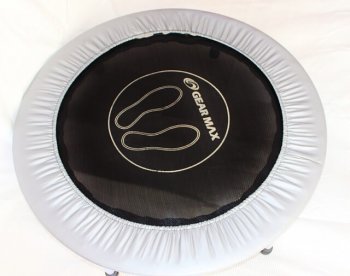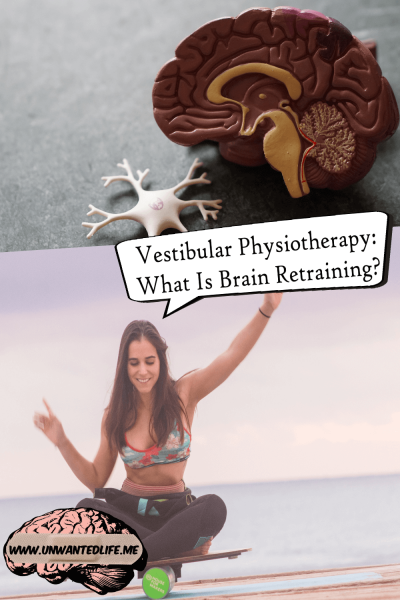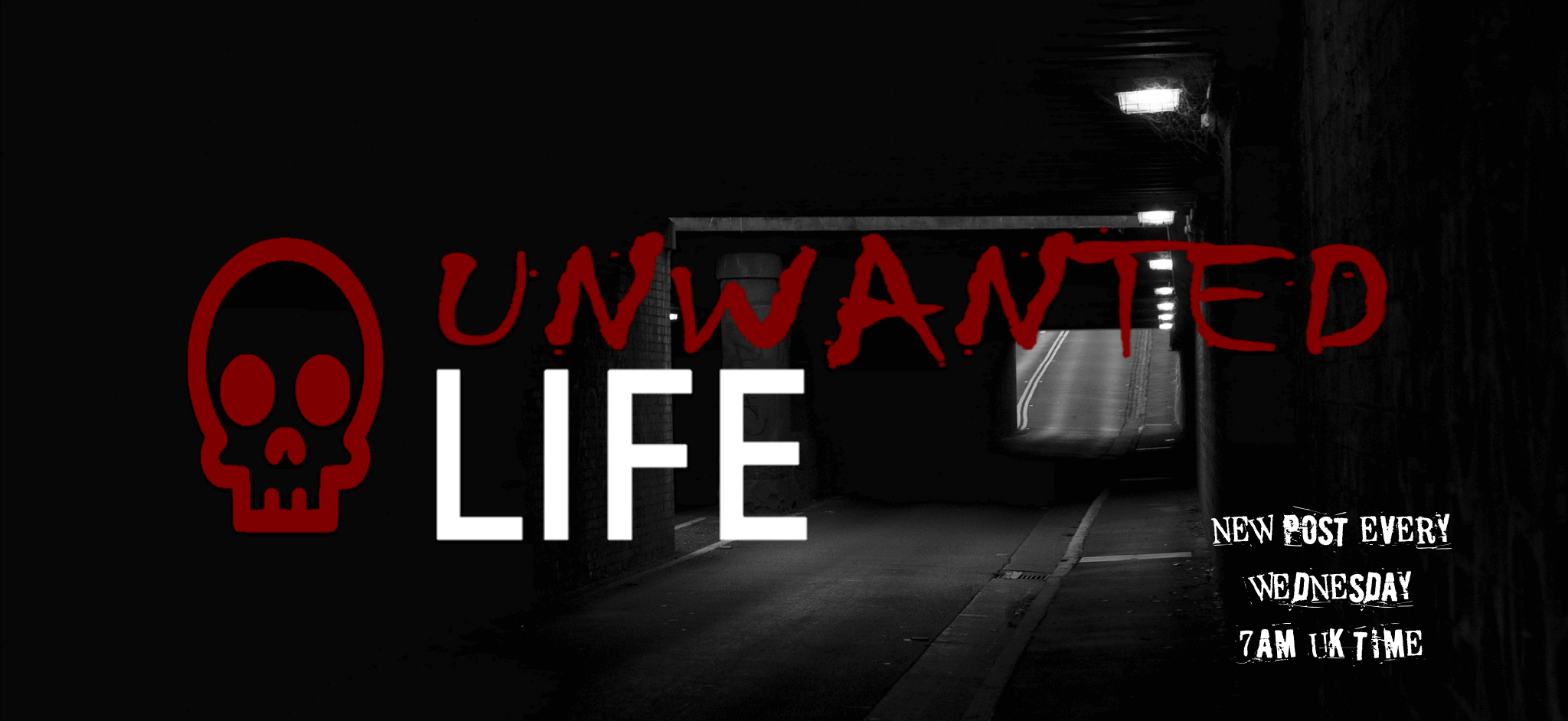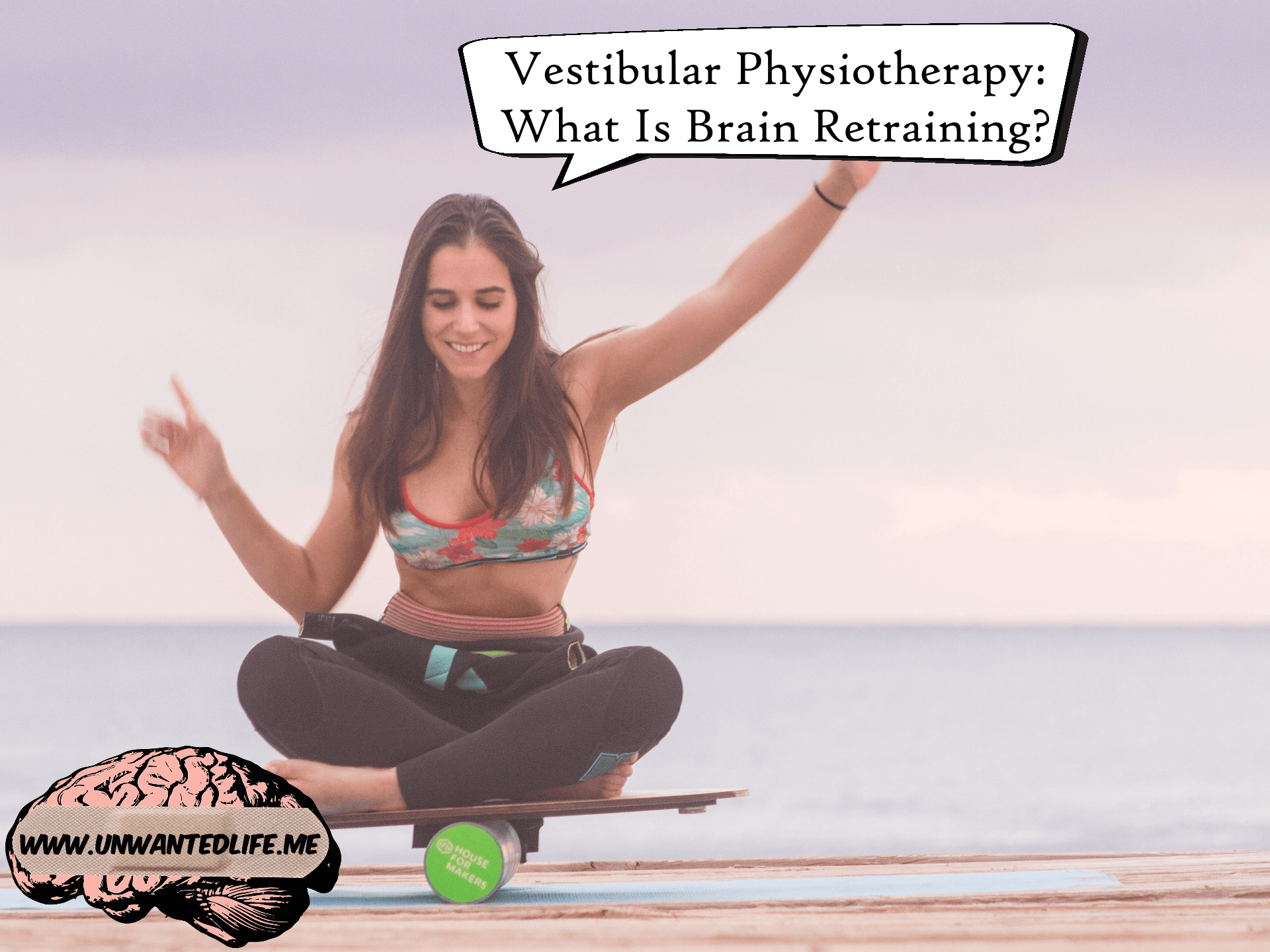In the summer I went to the balance clinic, where I got diagnosed with persistent postural perceptual dizziness (PPPD) and was then referred to vestibular physiotherapy, eventually (it took months of chasing to get this sorted). After having to cancel my first vestibular physiotherapy session, due to being really unwell (which ended up taking me three months to recover from), I finally got to do my first session.
But before I talk about that, let me quickly tell you what vestibular physiotherapy is and why it’s used.
What Is Vestibular Physiotherapy?
Vestibular physiotherapy is a form of treatment for dizziness and balance disorders like PPPD, where you work with a physiotherapist to run through an exercise programme tailored to your dizziness and balance needs. The exercises involve a lot of moving my head or eyes around, or at least they did for me. But you’ll find out more about my experience with vestibular physiotherapy in a second if you keep reading.
The aim is for your brain to be retrained so that it adapts to the weaker or altered signals from the balance organ that is throwing the whole vestibular balance system out of whack. This is known as vestibular compensation. Which I read a lot about as part of the exercises I had to do during my sessions (I’ll explain this later).
However, this brain retraining can take weeks, if not months, for your brain to learn how to compensate for the new way of doing things. And, as they told me because I’ve had PPPD for so long, I may never fully recover.
I was told by the physiotherapist that there would be six vestibular physiotherapy sessions, followed by a review. I ended up doing a session every fortnight rather than every week due to the availability because I didn’t want to have to deal with rush-hour trains. That’s because even super moderate exercise can cause me to feel dizzy and off-balance for hours at a time, and feeling unwell whilst riding a packed train isn’t fun.
The First Vestibular Physiotherapy Session
After filling in some questionnaires, I had to start the session with some warm-up exercises. I had to follow along to a video, fairly basic stuff. I’m guessing they treat more people who are from the older generation.
The first set of exercises to help with my PPPD was to stand with my legs and my eyes closed, then turn my head from side to side for a minute. Then the same again, but this time moving my head up and down for one minute.
This was followed by doing the legs and eyes closed thing on a tiny trampoline instead, and again, for one minute apiece. But without turning my head side-to-side or moving my head up and down. This was far harder to do than the previous exercise set.

After the fun on the baby trampoline, we moved on to a treadmill exercise. For this, I just had to walk at a walking pace and read two sheets of text (this was where I read a lot about vestibular compensation) that were between a dozen posters of weird patterns. The sheets that I had to read were both off-centre, which made me walk at a slight angle. I guess it was another factor in affecting your balance.
I had to read those two sheets of paper whilst I walked for two minutes on the treadmill. Then again, turning my head from side to side and then moved my head up and down as I read the sheets over and over again for 2 minutes. It was a weird experience because you’re focusing on something that’s off-centre whilst your head moves, but the main issue is that this makes you feel like you’re going to trip over your own feet at any minute.
Lastly, I had to go into the ‘disco’ room. This was where they had an old school light projecting a revolving ball, that rotated and projected different coloured lights. I had to look into the corner with this ball doing its thing in the dark for a minute. Then I had to do it again whilst marching on the spot for an additional minute.
That was my first session.
I’d also agreed to do an interview for a research project on my PPPD, which was being conducted at the hospital. However, there wasn’t an interviewer available to perform the interview, so they asked to call to conduct it instead. Sigh. I hate talking on the phone, but I agreed on a time for them to call me and I did answer the phone and take part in the research. On the plus side, I should get a copy of the research project when it’s complete, so that could be cool.
It took me some 4-5 hours to recover from the dizziness and balance problems this session caused. I felt really rough for a long time and it was a real struggle to do anything until I recovered.
The Homework
I was given a simple set of exercises to do at home, which was the first set of exercises from my first session. I decided the best way to make sure I always did them was to do that whilst I brushed my teeth. I use an electric toothbrush, so it made it even easier to keep track of, and it became an easy behaviour to add to my daily routine because I did it when I brushed my teeth.
The Second Vestibular Physiotherapy Session
On my way to the second session, I saw a long line of people getting off a train, which annoyingly triggered a dizzy response. A pretty bad one and the subsequent vestibular physiotherapy session only made that worse.
In this session, after the warm-up, we skipped the first set of exercises from the first session and went straight to the trampoline. This time, however, I had to also throw in some head movements. I had to move my head from side to side, then up and down, with my feet together and my eyes closed. It was extremely hard to balance on the trampoline with my eyes closed, my feet together, and my head moving. I was all over the place, and could barely move my head like I was supposed to, due to how bad my balance was.
The rest of the session was the same as the previous session.
I hadn’t noticed any improvements yet, but it was only my second session, and I’d only been doing the homework for two weeks by this point. Again, upon leaving this session I felt rough for several hours.

The Third Vestibular Physiotherapy Session
This was basically the same as the second session, except this time, they added in a short exercise bike session. This just involved doing a really, really gentle bike ride for three minutes. This might not seem like much, but moderate exercise can often trigger an episode where I get complete muscle weakness (which includes my bowels and bladder) which can last 40 minutes.
So I was a little worried, and it did make me feel rough, but luckily it didn’t trigger one of those dreaded muscle weakness episodes. However, my stomach started to feel upset after the bike, and my stomach remained upset for several hours.
There was also another change. The disco ball was updated and replaced with a projector so I could watch a video where I looked out of a train window, first still, then walking on the spot. Both for a minute each, in order to trigger my PPPD symptoms.
I still haven’t noticed any improvements. If anything, I seemed to be getting worse. I was starting to find the homework exercises had become harder to do: my balance felt worse whilst I did them.
Because this session left my stomach feeling upset, which lasted some 30-60 minutes after the session, I ended up buying doughnuts like a dumbass on my way back home. To give myself something nice. Which undid all my hard work of going keto to manage my reactive hypoglycaemia. I really need to find a better way to reward myself.
The Fourth Vestibular Physiotherapy Session
This session was the same as the previous one. I was asked to do the cooldown session this time, but I don’t do the cooldown stuff at the end as it features a lot of grounding techniques, which can cause me to have a psychotic episode (Mindfulness And Its Downsides: My Anxiety Disorders Vs Mindfulness).
Unusually, I felt worse before the session than I did after doing the exercises and stuff in the session. I am normally hit by my PPPD symptoms by the time I get to my vestibular physiotherapy session: it’s the travelling to get there that messes me up.
The Fifth, And Final, Session
Due to the coronavirus, my vestibular physiotherapy treatments ended a session early. The place was empty when I came in for my session. It was a weird experience. Normally there are always at least 2-3 other people there when I am.
Another thing that was unsettling was the fact that the first three hand sanitiser dispensers I tried to use when I got to the hospital were empty. This made my hands feel even more disgusting after touching these dispensers and not getting anything to clean my hands from them. Gross!
This was made worse, when I found out the following day that a person in my building (house of multiple occupancy) was told to self-isolate two days before when they fell ill (Coronavirus, Self-Isolation, And The Selfishness Of Others), but hadn’t bothered to follow any of the basic hygiene and self-isolating protocols. What a selfish person. I could have unintentionally spread it to that hospital because of that one person’s selfishness.
Anyway, my treatment was ending on session five instead of six. Instead, I was given home exercises to do for the next six months, and we went through those exercises in this session, trying to adapt them to my home situation (space issues).
My new daily homework for the next 6 months was to:
- Stand on a cushion or rolled-up towel, feet together, eyes close, and turn my head from side to side for a minute. Then do the same again but move my head up and down instead for one minute.
- Walk forward and backwards as I turn my head from side to side for a minute. Then do that again, but move my head up and down this time (don’t have the room to do this anywhere at home).
- Lastly, to watch optokinetic training videos by Gabrielle Pierce, and watch them for a minute whilst marching on the spot, then for another minute whilst matching on the spot, but with added head turns (I’m going to have to do this sitting down due to lack of space and placement of my TV).
Unlike the other homework, which I could do as I brushed my teeth, these new ones mean actually making time in my day to do them without doing something else at the same time. Which will make it hard for me to get motivated to do these new exercises daily.
This also means that it’ll take far longer before another treatment type is tried, such as medication, to help manage the dizziness. Because I was being discharged from their treatment, and I’ll have to get myself referred again to the balance clinic. Which could take months, and there are already six months to wait already. It’s taking so long to get my dizziness under control.
Anyway, I guess I’ll do a follow-up post to this one in about six-ish months, in case you’re interested in what happened next. Just a heads up though, I’ve already failed to do any of the new exercises I’ve been given, I just don’t have space, and I’ve been forced to self-isolate, so I’m unable to manage my hypos (What Is Reactive Hypoglycemia? Advice And Information).
I’ve also been stressed and depressed with trying to figure out what’s going on with my dissertation and my placement, which I now can’t complete due to the coronavirus. I know these are all just excuses for my normally chronic lack of motivation, but hey, if it works.
As always, leave your feedback in the comments section below. Also, feel free to share your experiences with a dizziness disorder or vestibular physiotherapy in the comments section below as well. If you want to stay up-to-date with my blog, then sign up for my newsletter below. Alternatively, get push notifications for new articles by clicking the red bell icon in the bottom right corner.
Lastly, if you’d like to support my blog, then you can make a donation of any size below as well. Until next time, Unwanted Life readers.


When I was in the U.K I’d work in the medical sector, coding diagnosis’s. This was the first time I’ve heard of someone experiencing PPPD first hand. It sounds a nightmare, how long have you been suffering from it? Did they physio say what might have triggered it?
As discussed with the specialist when I was tested at the Balance clinic (as mentioned in an older post (My Balance Tests), I think I’ve had it my entire life, due to suffering from terrible travel sicking through my first 10 years of life, and having issues with walking over certain patterned floors for as long as I can remember.
But it’s only since about 2007 where the dizzines started to become constant, and being made worse just by me moving around or scrolling on my phone. Although they don’t know why it got worse like that
This is brand-new information to me. But, how are you doing? Are you better now?
I’ve not had any improvements with my PPPD so far, which is frustrating
This kind of treatment was all very new to me. It sounds like it was quite the ordeal!
I must say though that I too fail to do any take-home exercises too. I know I should, that that is part of what I am paying for but I just don’t take the time to do it. Hopefully a work in progress for me, but so far one I’ve failed at again and again!
Good luck with this – and everything else you have on your plate right now!!
Thanks. It’s really hard to do the homework, it’s easy to forget. But if you can pair it with a behaviour you already do every day, that helps
It is good there are resources out there to help with this, but it is always tough to go on when the training itself is an ordeal. Maybe taking a healthy snack with you when you can go back to the hospital or keeping healthy snacks at home would be a good alternative to doughnuts? I know I like nuts and dried fruits after I finish something difficult, but keep at it and I hope you see some improvements soon!
Because I’ve always been a picky eater (I dislike nuts), and with the extra restrictions on what I should eat due to my reactive hypoglycaemia (I can’t eat fruit due to there carb content), there’s really not much left to eat in order to eat right. Which makes it really really hard
That does make it hard! I will let you know if I think of any snack suggestions.
Thanks ?
Wow! Thank you for sharing the information. I haven’t heard or had any prior knowledge to this article, but it was super interesting to read about. Wish you all the best 🙂
xoxo Olivia | https://www.oliviaandbeauty.com/
Thanks for stopping by
Dang, I didn’t know any of this stuff. I find it interesting to learn more about what people are going through. It’s sad though that if you haven’t heard of it, it probably means there’s less knowledge about it and is harder to find cures and such. I do hope that within the six months that you start to see even a small difference. Don’t lose hope!
I haven’t lost hope completely yet, but it’s slowly starting to drain away. Too much of a pessimist I guess
So interesting, it’s amazing what you can learn from a blog, thank you x
Thanks for reading
Very good and educational post. This is the first time I heard about vestibular physiotherapy. Thank you for sharing.
Thanks for reading
This is so incredibly interesting! I knew absolutely nothing about this until I read this informative post x
I’m glad you found it interesting ?
I believe this is the same thing one of my family members has. It has been an incredible struggle for him, so I am familiar with what you are going through. I hope the therapy works for you and helps you feel better soon. Try to stay positive and focus on small improvements. Sending you positive thoughts.
Thanks. I hope your family member is, or was, able to recover from theirs
Hi, I just read your blog. Thanks for your insight. I haven’t been diagnosed with PPPD but looking at the symptoms I think this is what I have. I’ve had constant dizziness for over 18 months with varying degrees on a daily basis.
I hope you have been able to keep up with the home exercises and hopefully feel some relief.
I was given similar exercises, but not as advanced as yours. I’m going to give yours a go, as it can’t hurt.
Thanks for sharing.
You might want to seek a formal diagnosis in order to rule out other dizziness conditions, but also to make sure it’s not a blood pressure issue as well
Thanks for this article. I also have pppd and get how frustrating it is. I understand how hard it is to commit to exercises. There’s a very good program out there that I really recommend for you. Check out Joey Remenyi on youtube. One thing that stands out, is that your exercises are very intense. Joey is all about keeping a comfortable pace. Please check her out on youtube. Good luck.
Thanks for the information, I’ll check it out
You’re welcome. And her site is http://www.seekingbalance.com.au (because it’s in Australia) and if you click on “free resources” on the top of that page, there’s a lot of good free info. Everyone’s different, but for me, I find that lack of quality sleep makes it worse. If you ever want to talk, I’m here. I feel this 24/7 and am always here. I’m a very nice person (just so you know!).
Thanks